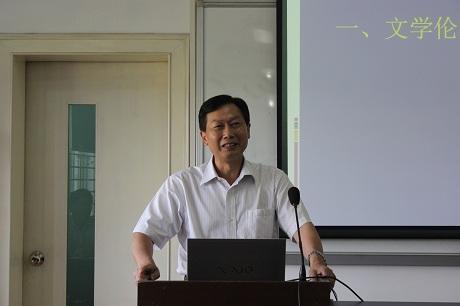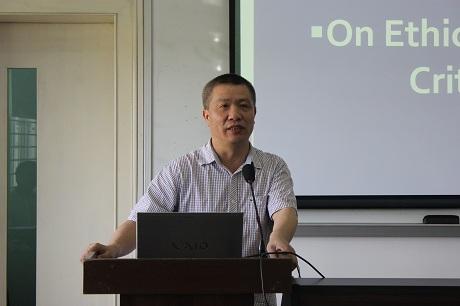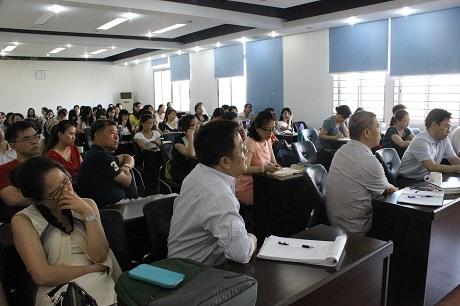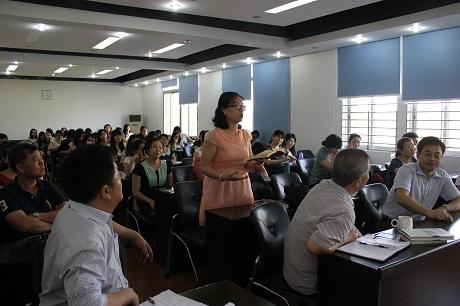
Keynote speaker Prof. Nie Zhenzhao

Host Professor Zhong Shuneng

Teachers and students

Q&A
On the afternoon of June 12, 2014, Nie Zhenzhao, professor and doctoral supervisor of Central China Normal University, paid a visit to School of Foreign Languages, South China University of Technology. He delivered a lecture on “Criticism of Literary Ethics: Basic Theory and Criticism Practice”. The lecture was presided by Prof. Zhong Shuneng, Dean of School of Foreign Languages. Teachers and postgraduates from Jinan University, Guangdong University of Foreign Studies, Guangzhou College of South China University of Technology attended the lecture.
Prof. Nie initially introduced us the development of literature and ethics. We got to know from his introduction that criticism of literary ethics has existed in China for ten years. Prof. Nie said that criticism of literary ethics has become internationalized and attracted more and more domestic and foreign scholars. Western scholars are willing to participate in activities of criticism of literary ethics. Prof. Nie gave a brief explanation to the definition of criticism of literary ethics, relevant theory and basic terminologies, etc. Prof. Nie pointed out that the way for human beings’ to choose ethics is ethical teaching and the tool with which human beings choose ethical teaching is literature. Prof. Nie illustrated this point by eliciting the role of Sun Wukong (King of Monkeys). Sun encountered lots of ethnic choices in the journey to west. “Hoops symbolize literature or poetry”, said Prof. Nie. He finally drew a conclusion that literature helps human beings make ethical choices as they become mature.
The lecture given by Prof. Nie is simple and clear but theoretically profound. In the section of Question and Answer, teachers and students raised various questions, which helped the lecture sparkle and reach its climax. In response to questions, Prof. Nie further stressed that criticism of literary ethics is a kind of analytical method and its essence is determined by literary text itself. The former cannot exist without the latter. The task of textual analysis is to detect the gambling phenomena which have been found by most people. He further pointed out that through applying criticism of literary ethics, we can interpret different points of view different from those of the public. To illustrate this point of view, he gave us the example of “Necklace” by Maupassant, a French writer, eliminating the negative image of the heroine in the story by setting up a positive image of the heroine.
His lecture is encouraging and well-done, since examples in the lecture are convincing and his points of view about criticism of literary ethics are in compliance with theory and practice. The teachers and students present are believed to have benefited a lot.

